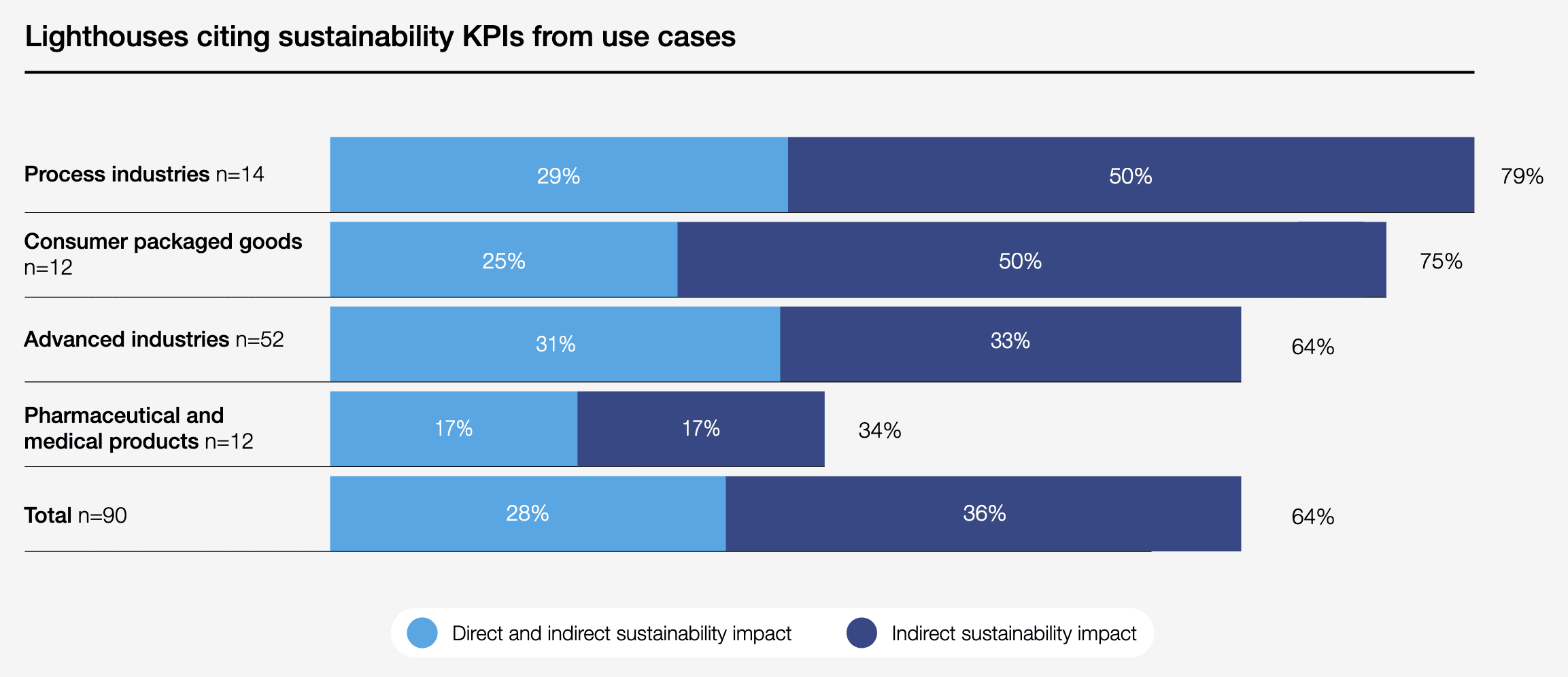It is a silly headline, and an opt-in competition, but the World Economic Forum’s list of ‘lighthouse factories’, acknowledged for their use of Industry 4.0 kit, now stretches to 103 manufacturing facilities, and includes at least six sites that have been separately acclaimed for their environmental records. It is worth making a fuss of their factory owners, for taking a lead on “tech-infused industry transformation for a positive impact on people and the planet”.
The lighthouse list, organised with consulting firm McKinsey & Company, identifies – or mainly reviews entries from – industrial companies that are making use of Industry 4.0 technologies, notably big data analytics and ‘artificial intelligence’, but also, very clearly, private cellular and edge computing tech, plus all manner of IoT gear, including autonomous guided vehicles (AGVs) and unmanned aerial vehicles (UAVs, or drones) at the top end.
And, of course, you can shunt most other software wizardry and hardware gadgetry into the mix, including lower-level IoT for industrial sensing, enterprise AR / VR gear for remote assistance, and digital thread / twin solutions for process simulations. The World Economic Forum wants its ‘lighthouse’ factories to show the way for industrial outfits to land these technology solutions, and to drive efficiency and productivity – and make the sector greener.
By 2020, 83 countries had reported 700 policies related to “sustainable consumption and production” to limit the rise in global temperature to less than 2°C above pre-industrial levels, and more ambitiously to less than 1.5°C, as per the Paris Agreement, but only 40 had reported policies to increase the sustainability of supply chains, among other measures. This failure should be considered as “code red for humanity”, the UN has responded.
But a handful of lighthouse factories, at least, are showing the way in the industrial supply chain. “Members are applying advanced technologies to increase supply chain resilience, augment green measures, and boost workforce engagement while bolstering productivity,” says the World Economic Forum. More tellingly, it says one thing drives the other – insofar as industrial efficiency in the end relates directly to environmental efficiency.
“Eco-efficiency is the outcome of 4IR technologies which, when directed to solve business problems, simultaneously boost productivity and sustainability. As companies achieve eco-efficiency, they challenge the notion that environmental responsibility is inherently at odds with increasing operational performance,” it says. Well over half of its lighthouse factories (64%) claim sustainability impact, deriving from both direct and indirect use cases (see graphic).
It states: “Of the 14 lighthouse factories engaged in ‘process industries’, 29 percent report sustainability gains on KPIs deriving from direct sustainability cases, but 50 percent report indirect impact from other cases. [And] while 25 percent of the 12 consumer packaged-goods ‘lighthouses’ cite direct sustainability use-case impact, a full 50 percent report impact from indirect use cases – [from Industry 4.0] efforts aimed at solving different business problems.”
The report, available here, contains much more of interest, but we will leave it there, for now; below are the best in the sustainability business, fully quoted, according to the World Economic Forum and McKinsey & Company. As an aside, it might be noted this short-list of six companies does not reflect the same geographic bias as the longer list of the 103 smartest factories, which is dominated by Asia-based entrants.
Here, based on smart manufacturing for sustainability above all else, half of the entries are based in Europe, a third are based in the US, and none are in China.

The Janssen Pharmaceutical Companies of Johnson & Johnson (Cork, Ireland)
Janssen Sciences Ireland Unlimited Company has been long supporting regional initiatives for sustainability improvement and now enabling the corporate 2030 pledge of carbon neutrality. Through Fourth Industrial Revolution-enabled real-time release, adaptive process control and other sustainability efforts, the site has optimized its processes and reduced carbon emissions per kg of product by 56%, while the site footprint has expanded by 34% to meet growing business needs.
Schneider Electric (Le Vaudreuil, France)
Schneider Electric Le Vaudreuil has implemented industrial internet of things (IIoT) sensors connected to digital platforms, unlocking data to optimize energy management by 25%, reduce material waste by 17% and minimize CO2 emissions by 25%, with the objective to be net-zero carbon by 2025, without offset and ahead of the global Schneider Electric pledge. The smart factory is equipped with a zero-reject water recycling station connected to cloud analytics and monitored by an artificial intelligence (AI) model to predict process drifts, leading globally to 64% in water reduction.
Western Digital (Penang, Malaysia)
Western Digital achieved a reduction in energy by 41%, water consumption by 45% and material waste by 16% through a vertically integrated smart factory. Fourth Industrial Revolution technologies, such as internet of things (IoT) sensors, digital twin modelling, analytics powered plant management system and lights-out automation with machine learning, increased their sustainability impacts, while the site grew 43% (Compound Annual Growth Rate) in the last four years. This concerted effort enabled the Malaysia Green Building Index (GBI) certification for the site.
Ericsson (Lewisville, US)
Ericsson’s greenfield 5G factory is powered 100% by renewable electricity from on-site solar and green-e certified renewable electricity from the utility grid. The smart factory integrates sustainable technologies such as thermal ice storage tanks with the IIoT stack to proactively monitor energy usage and is designed to utilize 24% less energy and 75% less indoor water usage, avoiding 97% operational carbon emission than comparable buildings. This year it became Ericsson’s first factory globally to achieve LEED Gold certification.
Henkel (Düsseldorf, Germany)
In an effort to improve visibility into factory consumption to drive better decision-making, Henkel deployed utility meters on machines integrated in a digital twin that connects and benchmarks 30 factories and prescribes real-time sustainability actions that has led to 38% less energy (kWh/tonne) used, and has reduced water consumption 28% (m 3 /tonne), and waste 20% (kg/tonne) across factory baselines set in 2010.
Schneider Electric (Lexington, US)
In order to capture greater energy consumption granularity, when and where it happens in the plant, the Lexington smart factory leveraged IoT connectivity with power meters and predictive analytics to optimize energy cost, and as a result led to 26% energy reduction (GWh), 30% net CO2 reduction, and 20% water use reduction and Superior Energy Performance 50001TM certification by the US Department of Energy.

